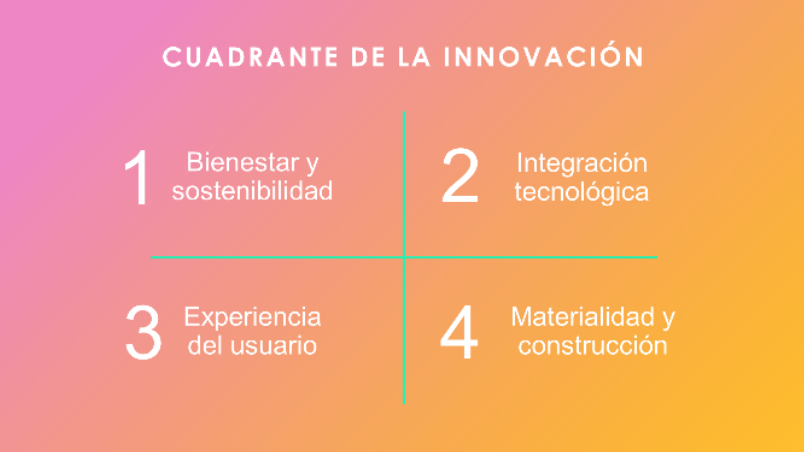

ABOUT THE AUTHOR
Leonardo Neve Sánchez Cafeína Design Founder and Director
Passionate for architectural design, to inspire through authentic and inclusive spaces, powered by a creative spirit and divergent ideas.
The importance of a good architectural design for the absorption of a real estate product.
As an architect, sometimes it’s frustrating to observe how many real estate developers don’t give any importance to aspects like aesthetics, originality, and emphasis on the design of the buildings that are part of their developments. This attitude seems to be natural at first sight, since they as developers seek as a priority: profitability, just because the success of their business depends on it!
We have gotten used to observing the repeated and unexciting blocks of buildings that conform landscapes of our cities, with little distinction for the segment of the population they intend to target. Identical model apartments are abundant in places designed for faceless users without personalities. The only design criteria are the distribution and surface and, in some cases, the finishes and the amenities. This business model has existed since the beginning of real estate development, and in most cases, it has been profitable. Still, the markets are evolving, and users and consumers are becoming more demanding. Competition in the field of the AEC industry (architecture, engineering, and construction) has increased internationally. In such a context, product differentiation is becoming key to the projects’ commercial success and, as a result, their guaranteed profitability.
Why real estate developments may not be successful?
There isn't such a thing as a success formula since each case can be different. Even so, I have concluded that the most critical problem associated with real estate development is low product absorption. This occurs when the project doesn't meet the projected sales expectations, and there is a high risk of failure. Now, the reason why the expectations aren't met by the offered product can be resumed in 3 main points: Price, place, and product. I will now explain the correlation between them.
1. Price
First, “the price” is the most sensible factor and the first element that the client will acknowledge, and as simple as that, if the client thinks it's too expensive, he won't consider it.
2. Place
Second, there is “the place” where there is a particular offer and demand, a specific purchasing power, certain weather conditions, and many other factors that should be known beforehand. It's also essential to pay attention to the particular needs of the inhabitants of the region where the development is projected. It is one of the best-comprehended factors in the sector since one of the main mottos of the industry is "location, location, location."
3. Product
Finally, we get to “the product”. It is a forgotten but valuable element that hasn't concerned the developers a lot but can still be as important as the other two. In a sector that's each time more competitive and demanding. What would happen if we offered a product at a fair price at the right location, which is also attractive? A space where the total amount of square meters is equally important as the most intangible needs of the future use while incorporating functionality, aesthetics, innovation, excitement, and why not? Also, sensuality.
The importance of innovation
Unfortunately, the AEC industry is one of the less innovative in comparison with other sectors worldwide. Additionally, in regions like Latin America, the innovation gap is around 8 and 10 years compared to more developed countries. Although we are experiencing a hyper-competitive context, it's vital to find differentiators of the offered product to obtain the required absorption. There is where innovation should play a fundamental role.
Innovation shouldn't be expensive, to the contrary, it must be a mechanism that allows for reduced costs due to the improvement of processes while offering attractive products that can warrant absorption, hence the subsistence of the company.
Convinced that innovation is the way to go, we design based on our innovation quadrant, a method that approaches four perspectives:
1. Wellness and sustainability
2. Technological integration
3. User experience
4. Construction materiality

Cafeína Design's Innovation Quadrant
User experience and the architecture of pleasure
Our primary goal in Cafeína Design is to cover the most transcendental human needs through the built environment. Therefore we implemented a methodology based on " Maslow's hierarchy of needs." This is an optimization model for human needs that describes at first, the necessities like nourishment or safety that must be covered to approach more complex needs like acknowledgement or self-realization.
Inspired by Maslow's model and new ergonomics and neuroscience studies, we developed a strategy that seeks to promote the self-realization of people in inhabited spaces. For such effect, the basic needs must first be satisfied, like having a healthy and safe place after a functional dwelling. Posteriorly, a more complex level of needs can be fulfilled, like individualization, through the design of an exciting place that connects effectively with the user's tastes, needs, and values—promoting an individual and pleasurable experience.

Maslow's Human Needs Optimization Pyramid

Cafeína Design's User-needs optimization Model
Conclusion
A good architectural project could be the difference in profitability in a real estate development, especially in a super-competed sector where innovation becomes key. In Cafeina Design, we developed a methodology that integrates the latest ergonomics, psychology, and neuroscience innovations. This way, we mastered designing authentic and attractive spaces that connect with their users' and communities' most profound needs. To generate inclusive architecture that awakens feelings of wellness and promotes the self-realization of its inhabitants, improving its context and promoting an individual and pleasurable experience for its users.
Want to know more about this topic?
Contact us


